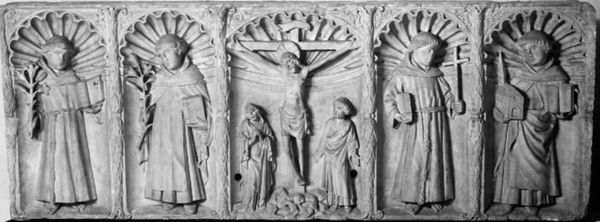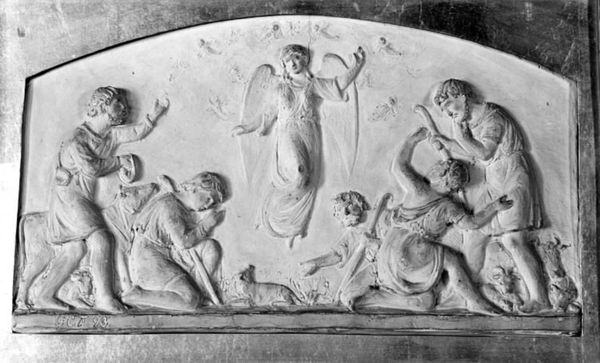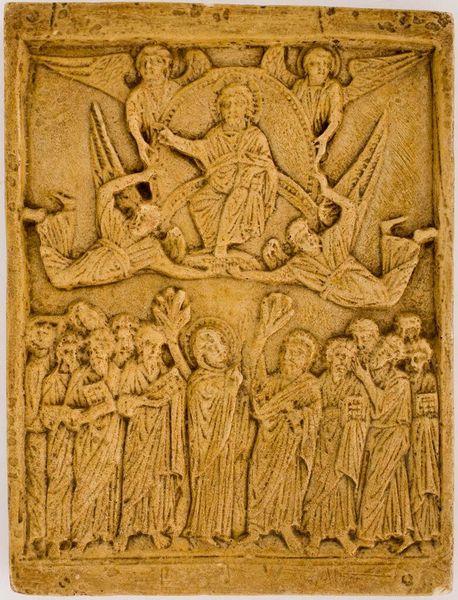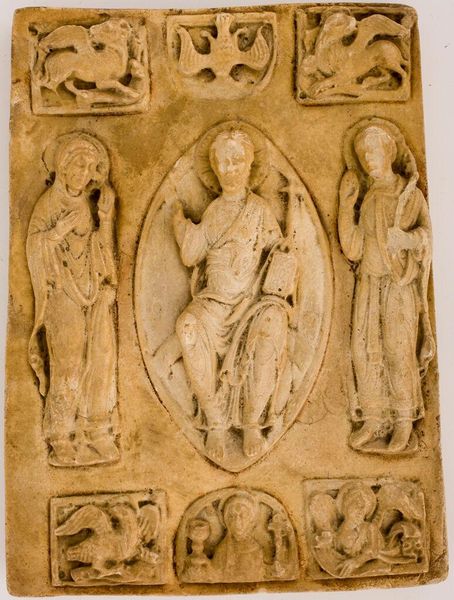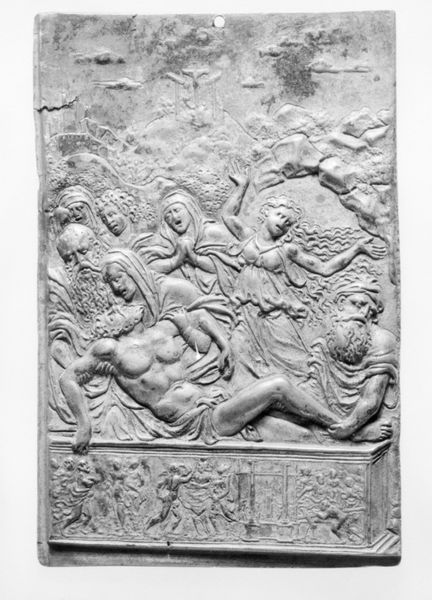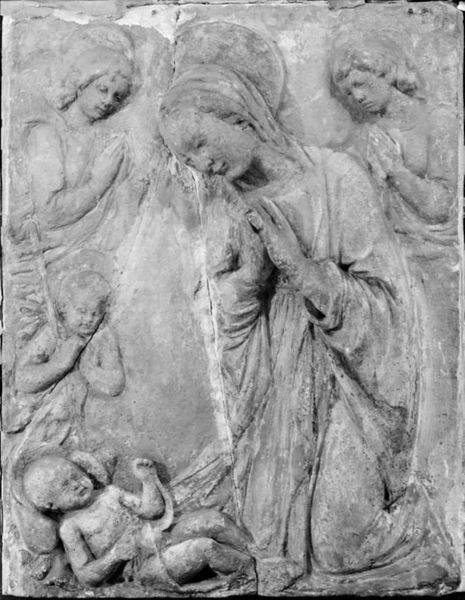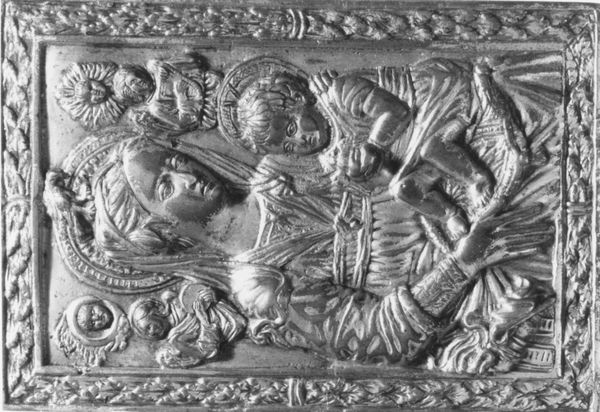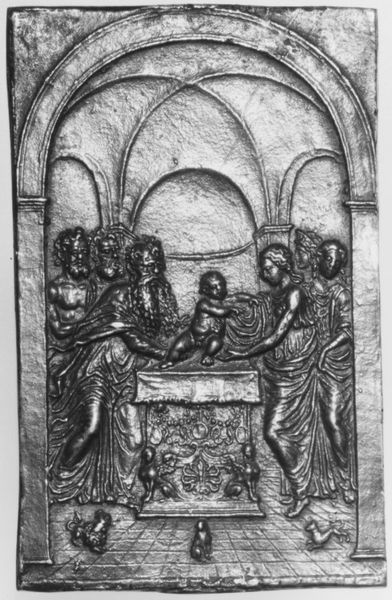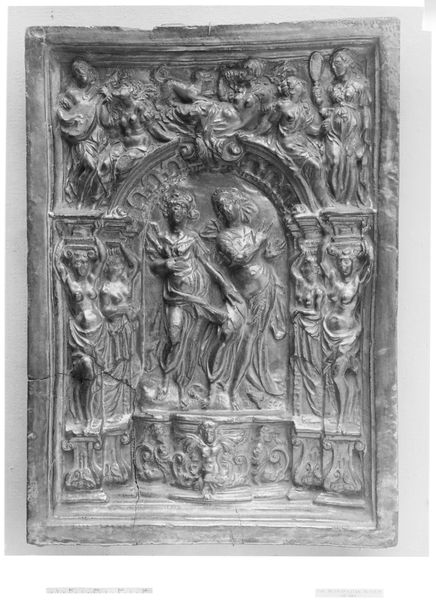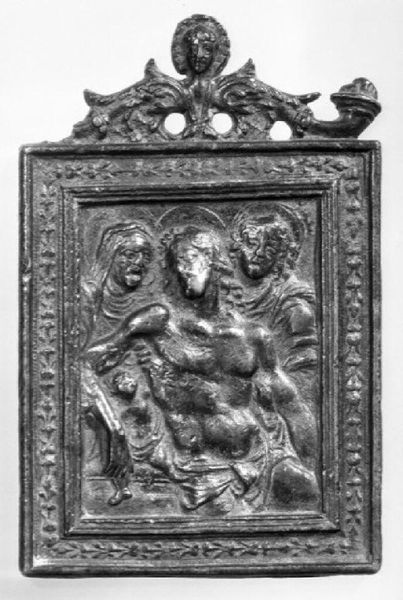
Tronende Kristus flankeret af to engle, Petrus og Paulus samt fire andre apostle 1350 - 1400
0:00
0:00
relief, sculpture, marble
#
medieval
#
sculpture
#
gothic
#
relief
#
figuration
#
sculpture
#
history-painting
#
marble
Dimensions: 26 cm (height) x 107 cm (width) (netto)
Curator: This is a marble relief from the late medieval period, around 1350 to 1400. Its title translates to "Christ Enthroned Flanked by Two Angels, Peter and Paul, and Four Other Apostles." Editor: Immediately striking is the formality, a certain solemn rigidity. Everything is contained, clearly delineated; the composition echoes that of a family photo—organized, static, hierarchical. I'm curious, what can you tell me about the material? Curator: It's marble, so the tooling of that stone, considering its weight, the sheer physical labor—it's monumental in every sense. But that labour also embeds this with cultural power. Who paid for it, for example, and why would marble be chosen? What about its installation location and audience? Editor: Indeed. The craftsmanship itself speaks volumes about the values of the era, from the extraction of the raw material to the artist's skill, the workshop setting... Did they have particular models or casts that artisans replicated and followed to ensure standardized representation of holiness and power? The fact that is it anonymous, only makes me feel more certain that this piece exists entirely in the service of those who commissioned it. Curator: Exactly! I wonder about its purpose beyond the devotional. It invites a particular kind of worship and reinforces the social structures of its time. These aren't just representations of faith; they are powerful statements about authority. What roles did women play, for instance, within this narrative? Were they rendered as active participants or were they passively subjected to a singular narrative of holiness? And whose history are we seeing here and whose stories remain untold? Editor: The materiality points to hierarchy of the Church. But if marble and method emphasize control, the cracks in that power begin to appear through considering wear. Was this used for public or private devotion? Seeing how its handled tells a parallel story. Curator: I agree; thinking about the damage and imperfections shifts the dialogue from the grand narrative to the human experience—its creation but also its reception. It serves as a powerful reminder of the ongoing tensions between institutional power and individual experience in the medieval world. Editor: By exploring these interwoven layers, we not only enhance our appreciation of this piece but we also amplify a deeper, more grounded awareness. We must remember what lies hidden in what we are shown and what work made the vision a reality.
Comments
No comments
Be the first to comment and join the conversation on the ultimate creative platform.
